The Dm7 Guitar Chord. There is just something inspiring about 7th chords. Maybe it's the bit of jazzy flair they add. Maybe it's the little bit of hope they can bring to a minor chord. Whatever it is, they make wonderful additions to anyone's personal guitar chord library.
If you are familiar with our Bm7 or Cm7 guitar chord lessons, then you are in familiar territory.
This lesson is going to cover how to build the Dm7 chord, how to add it into a chord progression, as well as several variations of how to play it.
Let's learn how to play it now.
How To Play The Dm7 Chord
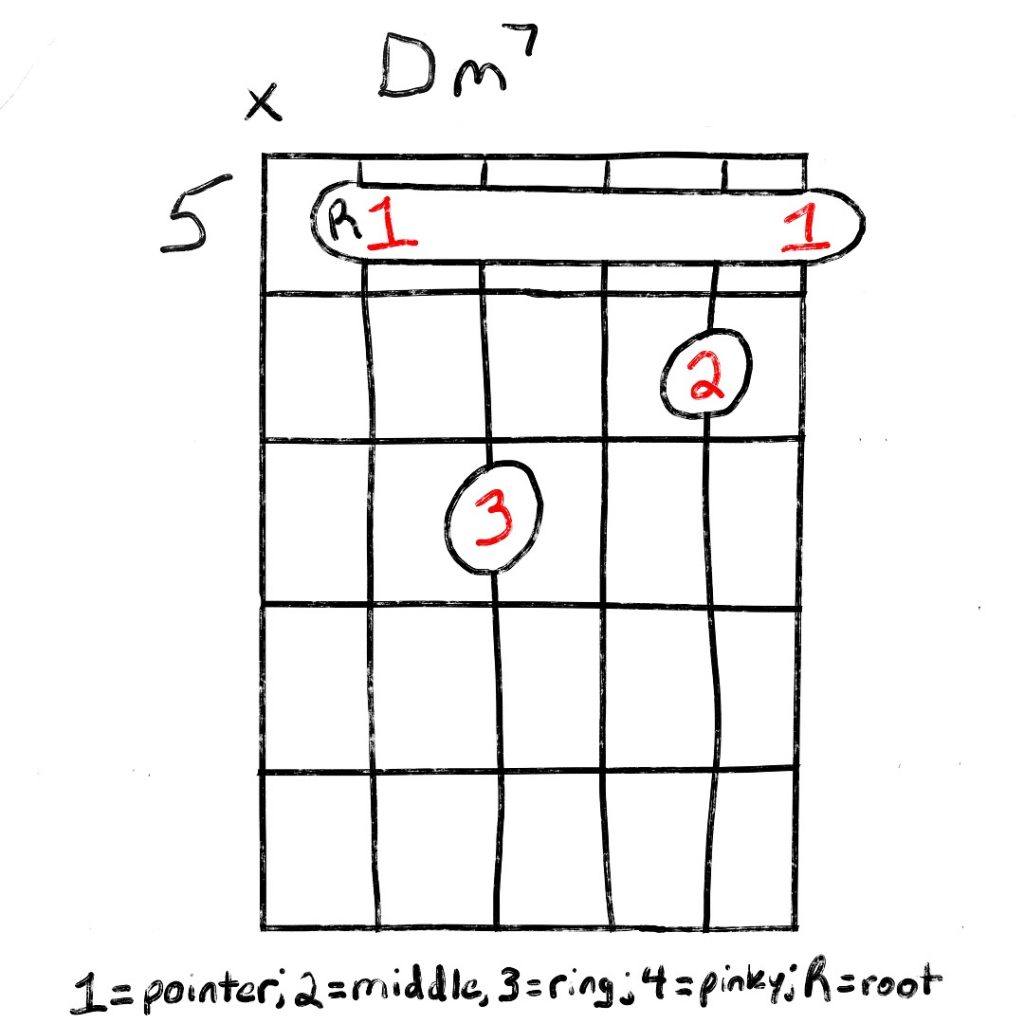
This is the first version of this chord most of us learn. It uses the Am7 chord shape on the 5th fret.
- index finger (1) across the bottom 5 strings in a barre shape on the 5th fret
- middle finger (2) on the F note of the B string on the 6th fret
- ring finger (3) on the A note on the D string at the 7th fret
- mute the low E string
Variations Of The Chord
There are several different ways to play Dm7. Let's take a look at some of these alternate versions.
This first variation is on the 3rd fret:
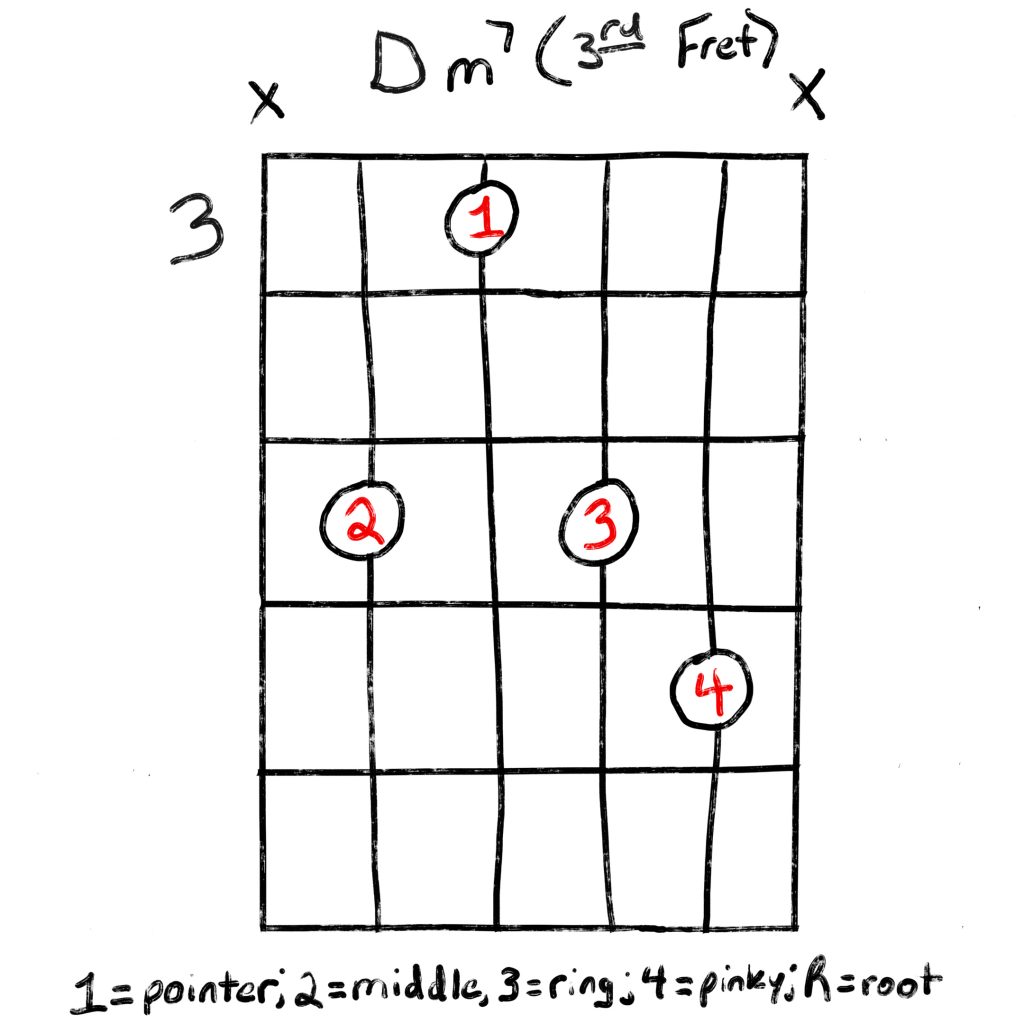
- index finger (1) on the F note of the D string at the 3rd fret
- middle finger (2) on the root D note of the A string at the 5th fret
- ring finger (3) on the C note on the G string at the 5th fret
- pinky finger (4) on the F note on the B string at the 6th fret
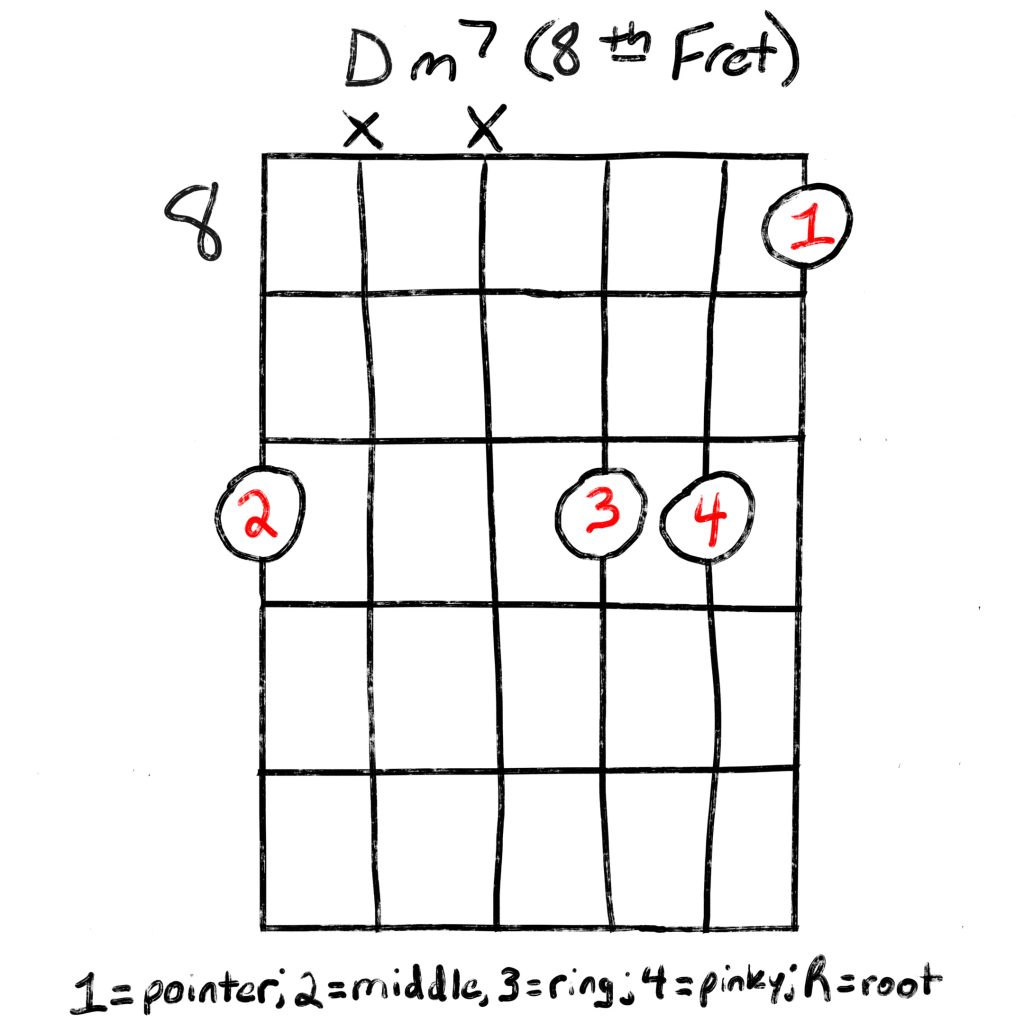
This version may feel a little awkward at first but is a good way to learn how to stretch your fingers.
- index finger (1) fretting the C note on the high e string at the 8th fret
- middle finger (2) fretting the root D note on the low E string at the 10th fret
- ring finger (3) fretting the F note on the G string at the 10th fret
- pinky finger (4) fretting the A note on the B string at the 10th fret
Dm7 can be played at many different points along the neck. Here is just one example:
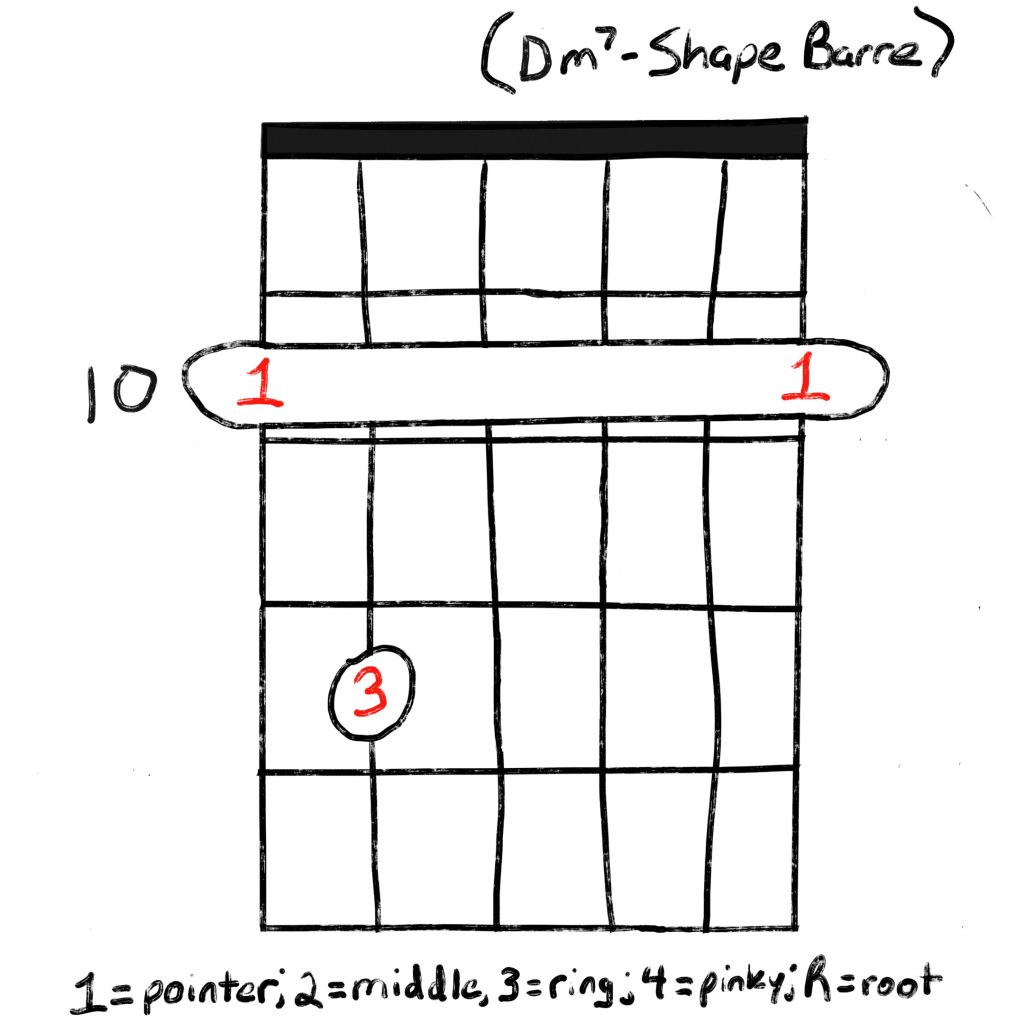
You use an Em7 barre chord shape on the 10th fret. Fret the strings like so:
- index finger (1) barred across the six strings on the 10th fret
- ring finger (3) on the A note on the A string at the 12th fret
The Theory Behind It
To build a major chord, you start with the major scale of that chord. In this case you use the D major scale and make a major triad. The major triad uses the I, III, and V notes in the scale. To make a D major chord you would use:
- D (I)
- F# (III)
- A (V)
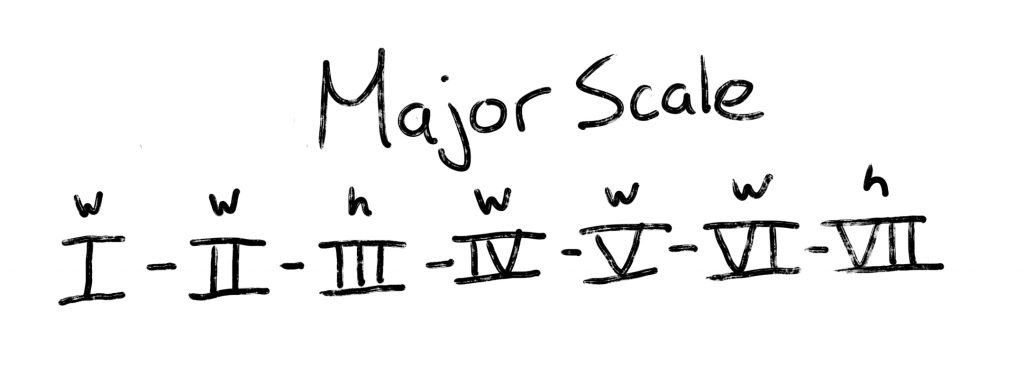
The D major scale looks like this:
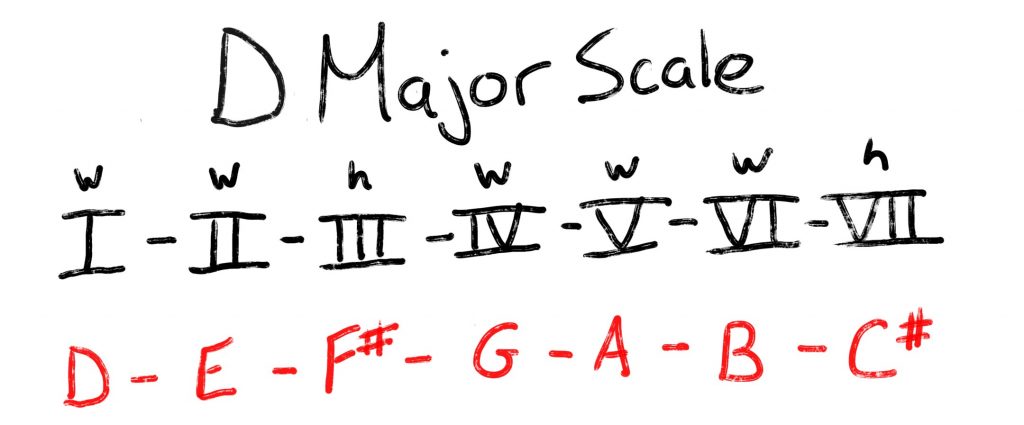
We use the same scale with a different formula to build a minor chord. You still use the I and V chords. However you use a bIII, or flat 3rd instead of the III. That simply means you lower the III by a half step. So your F# becomes an F.
The formula for a Dm chord look like:
- D (I)
- F (bIII)
- A (V)
If you want to make a major chord a major 7th you just add a VII note. A Dmaj7 would look like:
- D (I)
- F# (III)
- A (V)
- C# (VII)
A minor 7th needs a bVII, or flat 7th, instead of a VII note. so a Dm7 looks like:
- D (I)
- F (bIII)
- A (V)
- C (bVII)
Complementary Chords
Chords are fun, but the real fun is putting together your own chord progressions. This is the basis of songwriting.
While building the Dm7 chord we used the D major scale. But to build a chord progression, we do things a bit differently. Using the Dm root of the D minor chord scale, so we use that scale when picking our chords.
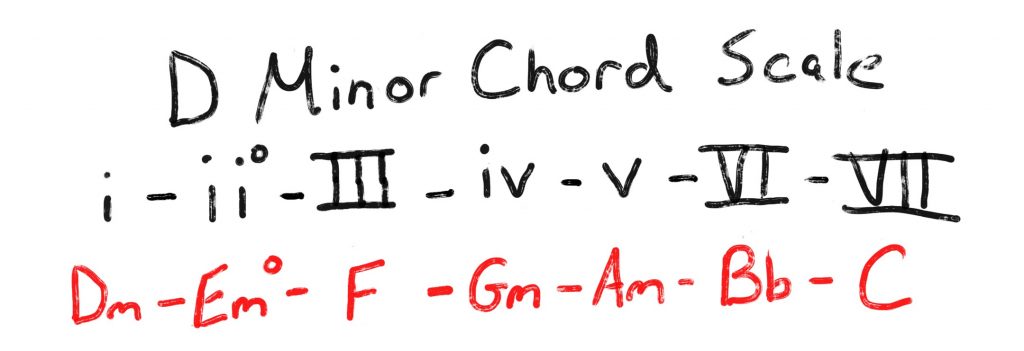
The chords available in a D minor chord scale are:
- Dm (i)
- Edim (iidim)
- F (III)
- Gm (iv)
- Am (v)
- Bb (VI)
- C (VII)
Note: when a scale degree is lower case (example "iv") that means it is a minor chord.
To build your own chord progression you simply pull your chords from the chord scale. For instance, we went with a i7 - iv7 - VII7 - v7 - i7 - iv7 - VII7 - VII7 progression; or Dm7 - Gm7 - C7 - Am7 - Dm7 - Gm7 - C7 - C7.
This is how you play that progression:

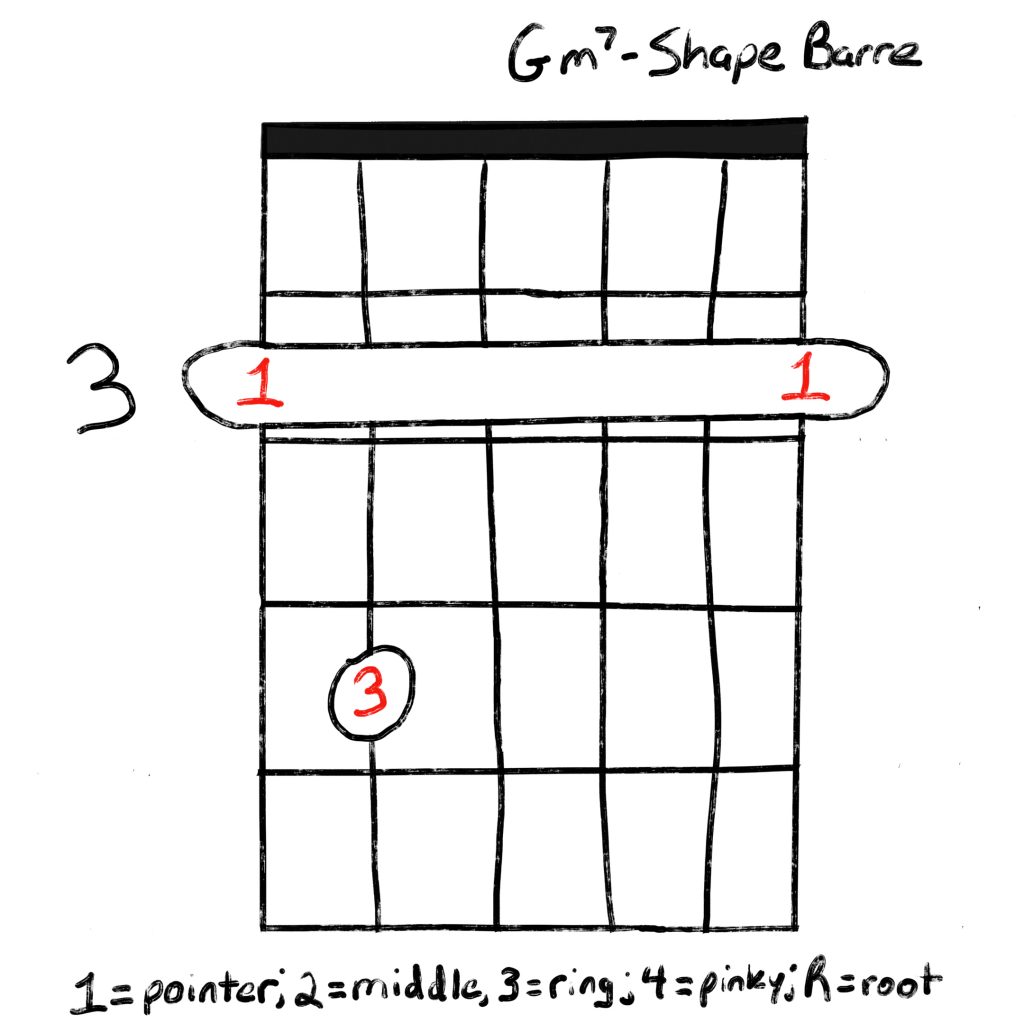
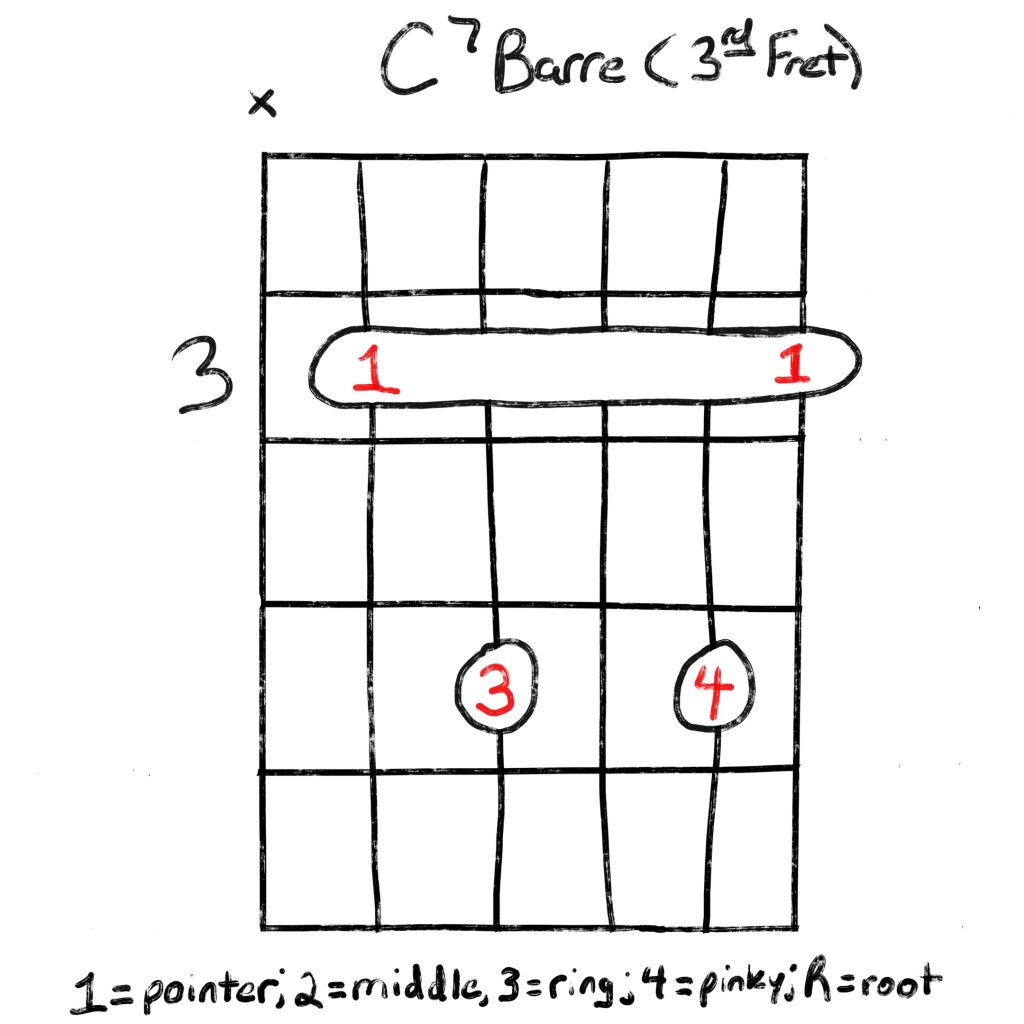
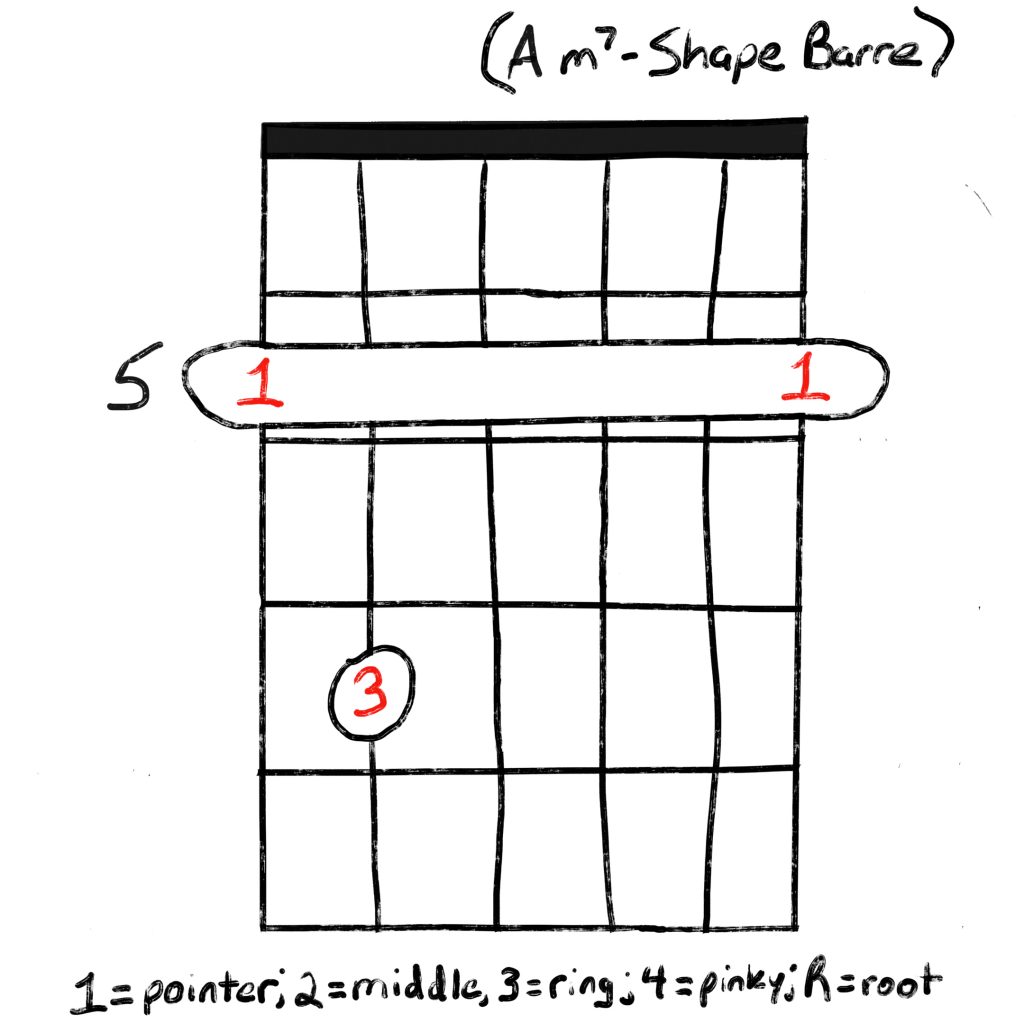



A Couple Dm7 Chord Variations
One great thing about music, specifically guitar, is there are several ways to play an individual chord. Here are a few more variations.
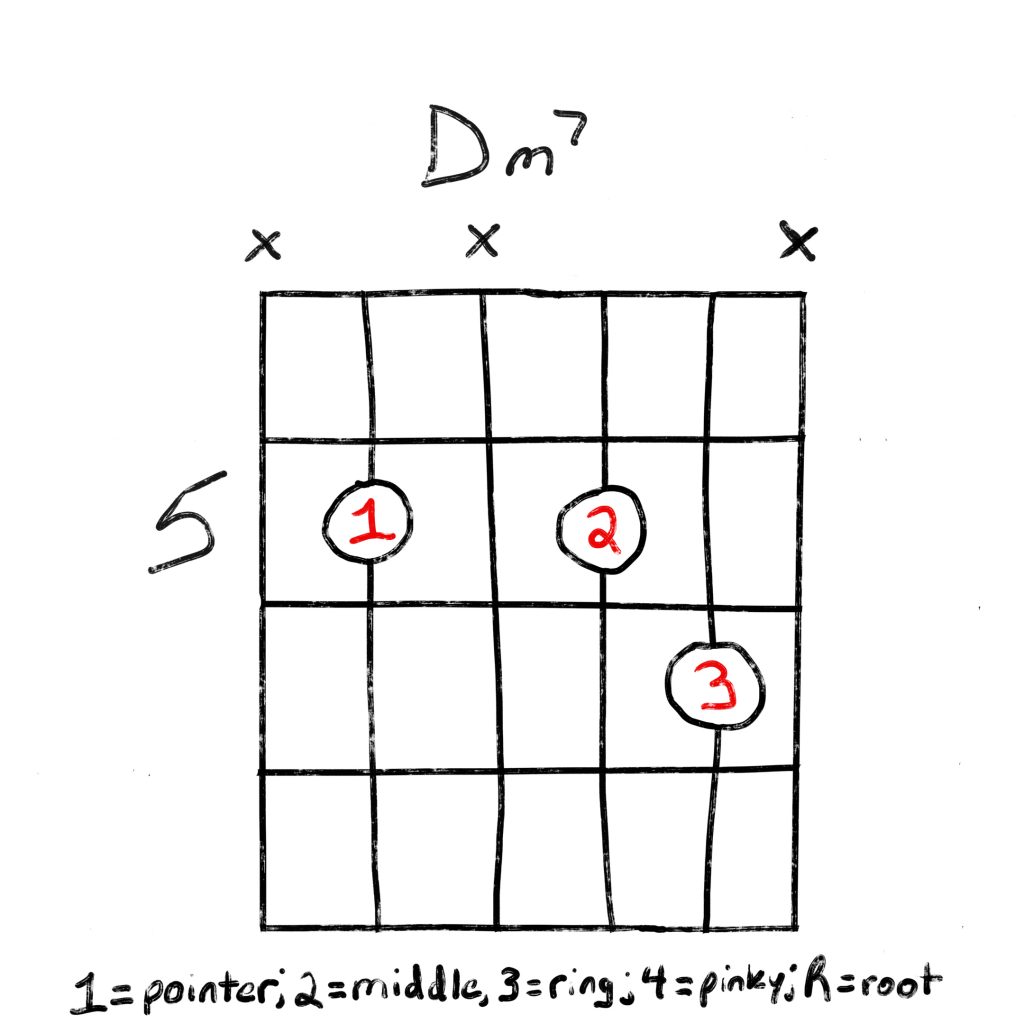
In this version of the Dm7 you play it on the 5th fret. You play this chord by placing your:
- index finger (1) fretting the D note on the A string at the 5th fret
- middle finger (2) fretting the C note on the G string at the 5th fret
- ring finger (3) fretting the F note on the B string at the 6th fret
You can use an A shape barre chord on the 10th fret with the D bass note on the 10th fret.
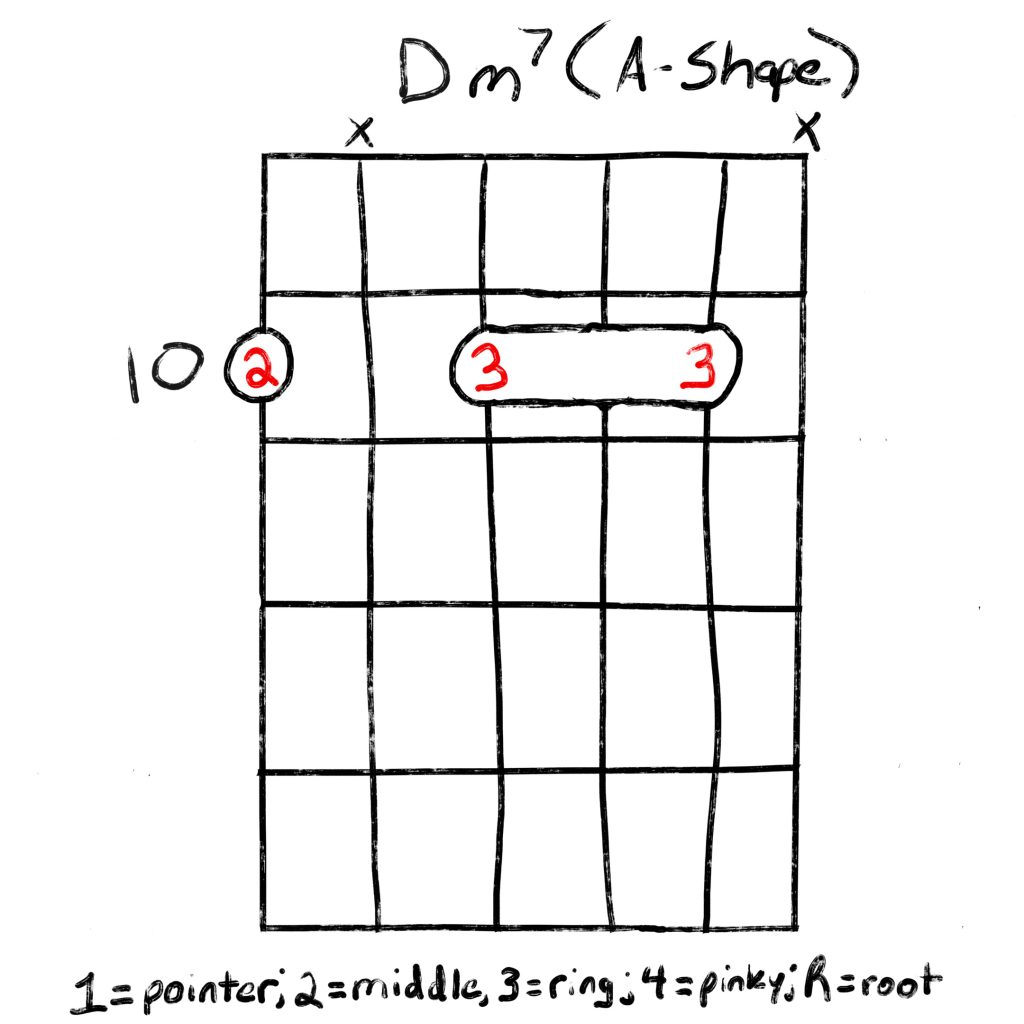
The last version we'll learn is:
- middle finger (2) fretting the D note on the low E string at the 10th fret
- ring finger (3) barring the C, F, & A notes on the D, G, and B strings of the 10th fret
- mute the A string with your middle finger (2) and the high e string with your ring finger (3)
Songs That Have The Dm7 Chord
Here are some popular songs across multiple genres that have an Dm7 chord in them:
- All Of Me by John Legend
- Can't Buy Me Love by The Beatles
- Careless Whisper by George Michael
- Fire And Rain by James Taylor
- Like A Rolling Stone by Bob Dylan
- Lucky by Jason Mraz
- Price Tag by Jessie J
- Scar Tissue by Red Hot Chili Peppers
Final Word
As you can see, the Dm7 guitar chord is a great addition to any chord progression. The range of genres and music styles that use this chord is pretty wide.
See if you can find a fun and interesting use for Dm7 next time you pick up your guitar.

Leave a Reply